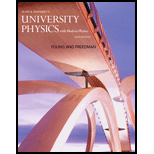
Concept explainers
You use an electronic signal generator to produce a sinusoidal sound wave in air. You then increase the frequency of the wave from 100 Hz to 400 Hz while keeping the pressure amplitude constant. What effect does this have on the displacement amplitude of the sound wave? (i) It becomes four times greater; (ii) it becomes twice as great; (iii) it is unchanged; (iv) it becomes
Learn your wayIncludes step-by-step video

Chapter 16 Solutions
University Physics with Modern Physics (14th Edition)
Additional Science Textbook Solutions
Sears And Zemansky's University Physics With Modern Physics
Physics for Scientists and Engineers: A Strategic Approach, Vol. 1 (Chs 1-21) (4th Edition)
Modern Physics
University Physics (14th Edition)
Essential University Physics: Volume 2 (3rd Edition)
- A sound wave in air has a pressure amplitude equal to 4.00 103 Pa. Calculate the displacement amplitude of the wave at a frequency of 10.0 kHz.arrow_forwardThe bulk modulus of water is 2.2 109 Pa (Table 15.2). The density of water is 103 kg/m3 (Table 15.1). Find the speed of sound in water and compare your answer with the value given in Table 17.1.arrow_forwardA steel wire of length 30.0 m and a copper wire of length 20.0 m, both with 1.00-mm diameters, are connected end to end and stretched to a tension of 150 N. During what time interval will a transverse wave travel the entire length of the two wires?arrow_forward
- In Figure OQ14.3, a sound wave of wavelength 0.8 m divides into two equal parts that recombine to interfere constructively, with the original difference between their path lengths being |r2 − r1| = 0.8 m. Rank the following situations according to the intensity of sound at the receiver from the highest to the lowest. Assume the tube walls absorb no sound energy. Give equal ranks to situations in which the intensity is equal. (a) From its original position, the sliding section is moved out by 0.1 m. (b) Next it slides out an additional 0.1 m. (c) It slides out still another 0.1 m. (d) It slides out 0.1 m more. Figure OQ14.3arrow_forwardWhen all the strings on a guitar (Fig. OQ13.5) are stretched to the same tension, will the speed of a wave along the most massive bass string be (a) faster, (b) slower, or (c) the same as the speed of a wave on the lighter strings? Alternatively, (d) is the speed on the bass string not necessarily any of these answers? Figure OQ13.5arrow_forwardRank the waves represented by the following functions from the largest to the smallest according to (i) their amplitudes, (ii) their wavelengths, (iii) their frequencies, (iv) their periods, and (v) their speeds. If the values of a quantity are equal for two waves, show them as having equal rank. For all functions, x and y are in meters and t is in seconds. (a) y = 4 sin (3x 15t) (b) y = 6 cos (3x + 15t 2) (c) y = 8 sin (2x + 15t) (d) y = 8 cos (4x + 20t) (e) y = 7 sin (6x + 24t)arrow_forward
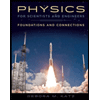 Physics for Scientists and Engineers: Foundations...PhysicsISBN:9781133939146Author:Katz, Debora M.Publisher:Cengage Learning
Physics for Scientists and Engineers: Foundations...PhysicsISBN:9781133939146Author:Katz, Debora M.Publisher:Cengage Learning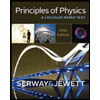 Principles of Physics: A Calculus-Based TextPhysicsISBN:9781133104261Author:Raymond A. Serway, John W. JewettPublisher:Cengage Learning
Principles of Physics: A Calculus-Based TextPhysicsISBN:9781133104261Author:Raymond A. Serway, John W. JewettPublisher:Cengage Learning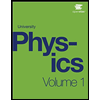 University Physics Volume 1PhysicsISBN:9781938168277Author:William Moebs, Samuel J. Ling, Jeff SannyPublisher:OpenStax - Rice University
University Physics Volume 1PhysicsISBN:9781938168277Author:William Moebs, Samuel J. Ling, Jeff SannyPublisher:OpenStax - Rice University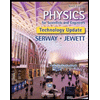 Physics for Scientists and Engineers, Technology ...PhysicsISBN:9781305116399Author:Raymond A. Serway, John W. JewettPublisher:Cengage Learning
Physics for Scientists and Engineers, Technology ...PhysicsISBN:9781305116399Author:Raymond A. Serway, John W. JewettPublisher:Cengage Learning



